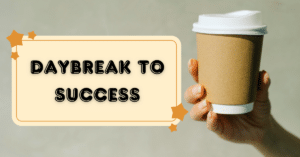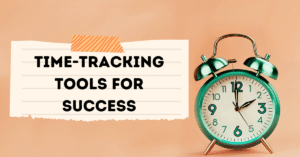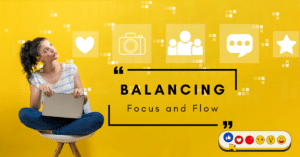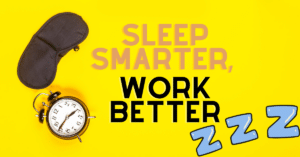Are you tired of falling into the procrastination trap and yearning to become a productive powerhouse? You’re not alone. Many individuals struggle with procrastination, which hampers their ability to accomplish tasks efficiently and reach their goals. The good news is that transforming from a chronic procrastinator to a productive individual is entirely possible. In this post, we will explore six actionable steps to help you improve your productivity and break free from procrastination. By implementing these strategies, you’ll be well on your way to becoming a highly efficient producer.

Recognizing the Procrastination Trap: Breaking Free from Productivity Roadblocks
Procrastination is a sneaky productivity roadblock that can hinder our progress and leave us feeling frustrated. The first step to overcoming this habit is to recognize when we fall into the procrastination trap. It’s essential to develop self-awareness and identify the patterns and triggers that lead to procrastination. Are there certain tasks or projects that you consistently delay? Do you find yourself getting easily distracted or making excuses? By acknowledging these tendencies, you can start taking proactive measures to break free from the grasp of procrastination. Understanding the underlying reasons behind your procrastination habits will empower you to address them head-on and pave the way for increased productivity and success.
Setting Clear Goals: The Key to Overcoming Procrastination and Increasing Productivity

Setting clear goals is a powerful tool in combating procrastination and unlocking higher levels of productivity. Without well-defined objectives, it’s easy to lose focus and become susceptible to distractions. Establishing specific, measurable, achievable, relevant, and time-bound (SMART) goals provides you with a roadmap for success. Clearly outlining what you want to achieve and breaking it down into smaller, actionable steps not only provides clarity but also helps you stay motivated and accountable. Whether it’s a big project or a daily to-do list, setting clear goals enables you to prioritize effectively, make progress consistently, and overcome the urge to procrastinate. By harnessing the power of goal setting, you’ll find yourself more driven, focused, and productive in accomplishing what truly matters to you.
Breaking Down Goals into Manageable Tasks
Breaking down your goals into manageable tasks is a crucial step in setting clear goals and combating procrastination. When faced with a large and overwhelming plan, it’s easy to get discouraged and put it off. However, by breaking it down into smaller, bite-sized tasks, you make it more approachable and achievable. To implement this strategy effectively, consider the following:
- Start by identifying the major milestones or components of your goal.
- Divide each milestone into specific tasks that need to be completed.
- Set realistic timelines for each task to ensure steady progress.
- Prioritize the tasks based on their importance and urgency.
- Focus on one task at a time to avoid feeling overwhelmed.
- Celebrate your accomplishments as you complete each task, boosting motivation and momentum.
By breaking down your goals into manageable tasks, you not only make them more attainable but also create a clear roadmap for action, keeping you on track toward productivity and success.
Setting Deadlines and Milestones for Progress
Setting deadlines and milestones is a powerful technique to stay accountable, track progress, and overcome procrastination. Without specific time constraints, tasks and goals tend to expand, and procrastination thrives. Here’s how you can effectively use deadlines and milestones:
- Assign a deadline to each task or milestone you’ve identified.
- Ensure that your deadlines are realistic and allow for adequate time to complete the task.
- Use a calendar or task management tool to track and visualize your deadlines.
- Break down larger goals into smaller milestones with their respective deadlines.
- Regularly review your progress against the set milestones and adjust as needed.
- Consider sharing your deadlines and milestones with a trusted colleague or friend for added accountability.
By setting deadlines and milestones, you create a sense of urgency and structure, motivating you to take action, maintain momentum, and ultimately increase your productivity.
Creating a Visual Representation of Your Goals
Visualizing your goals can be a powerful tool to enhance focus, motivation, and productivity. When we can tangibly see our goals, it becomes easier to internalize and work toward them. Consider the following approaches to create a visual representation of your goals:
- Use a vision board: Gather images, quotes, and symbols that represent your goals and create a physical or digital collage.
- Draw a mind map: Start with your main goal in the center and branch out with related sub-goals and tasks.
- Make a progress chart: Create a chart or graph where you can track your progress visually, marking each milestone achieved.
- Utilize a bullet journal: Customize a journal with visuals, colors, and diagrams to document your goals and progress.
By creating a visual representation of your goals, you engage both the logical and creative parts of your brain, reinforcing your commitment, and fostering a positive mindset towards productivity.

Creating a Productive Routine: Establishing Habits for Success
Establishing a productive routine is a key component in boosting productivity and achieving success. When our actions become habitual, we eliminate decision fatigue and create a structured environment that supports efficiency and focus. Here are some steps to help you create a productive routine:
- Define your goals and priorities: Determine what tasks and activities align with your objectives.
- Identify your most productive hours: Discover when you feel most energized and focused.
- Plan your day: Allocate time blocks for specific tasks and prioritize accordingly.
- Incorporate breaks and downtime: Allow yourself time to recharge and avoid burnout.
- Minimize distractions: Create a dedicated workspace and establish boundaries.
- Build habits gradually: Start small and gradually introduce new habits into your routine.
- Monitor and adjust: Regularly evaluate the effectiveness of your routine and make necessary adjustments.
By creating a productive routine, you establish a framework that optimizes your time and energy, enabling you to consistently perform at your best and accomplish your goals with greater ease.
Prioritization Techniques: Streamlining Your Tasks and Boosting Efficiency

Prioritization is a crucial skill in optimizing productivity and ensuring that you focus your time and energy on what truly matters. By implementing effective prioritization techniques, you can streamline your tasks and boost efficiency. Here are some strategies to help you prioritize effectively:
- Evaluate task importance: Assess the significance and impact of each task on your goals.
- Consider deadlines and urgency: Identify tasks with imminent deadlines or time-sensitive requirements.
- Apply the Eisenhower Matrix: Categorize tasks into four quadrants based on their urgency and importance.
- Utilize the 80/20 rule: Prioritize tasks that yield the most significant results or impact.
- Practice the “Eat the Frog” technique: Tackle the most challenging or least desirable tasks first.
- Delegate or eliminate non-essential tasks: Identify tasks that can be delegated or removed from your workload.
- Regularly review and adjust priorities: Stay flexible and adapt your priorities as circumstances change.
By adopting these prioritization techniques, you can streamline your task list, focus on high-value activities, and optimize your productivity by allocating your time and resources where they will have the greatest impact.
Managing Distractions: Techniques for Focusing and Minimizing Procrastination
In our hyperconnected world, managing distractions is essential for maintaining focus and minimizing procrastination. Distractions can derail productivity and hinder progress on important tasks. To effectively manage distractions, consider the following techniques:
- Create a dedicated workspace: Establish a designated area that is free from potential distractions.
- Turn off notifications: Silence or disable notifications on your devices to minimize interruptions.
- Practice time blocking: Allocate specific time blocks for focused work and eliminate potential distractions during those periods.
- Use productivity apps and browser extensions: Utilize tools that block or limit access to distracting websites or apps.
- Practice the Pomodoro Technique: Work in short, focused bursts followed by brief breaks to maintain concentration.
- Employ noise-cancellation techniques: Use noise-canceling headphones or ambient sound apps to create a quiet, focused environment.
- Develop self-discipline: Cultivate habits of self-control and mindfulness to resist distractions and stay on task.
By implementing these techniques, you can proactively manage distractions, cultivate a focused mindset, and minimize procrastination, leading to increased productivity and more efficient task completion.
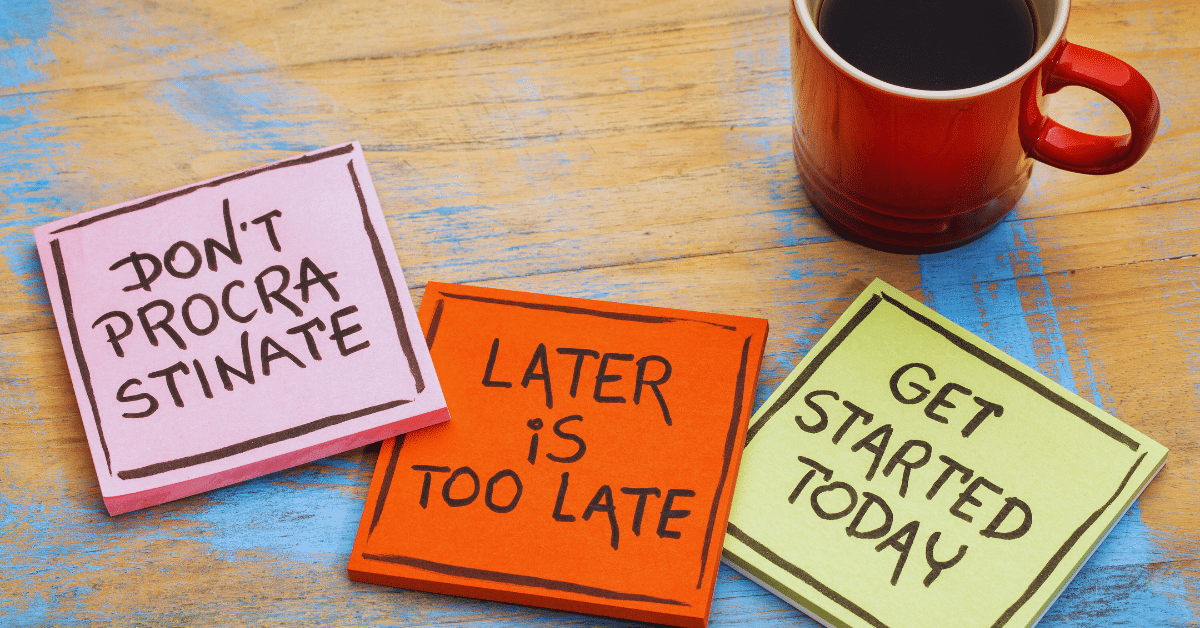
Creating a Distraction-Free Environment
Creating a distraction-free environment is a key aspect of managing distractions and fostering productivity. By optimizing your physical workspace and minimizing potential disruptions, you can enhance focus and minimize the temptation to procrastinate. Consider the following strategies to create a distraction-free environment:
- Designate a specific area for work: Dedicate a space solely for work-related activities to establish a clear boundary between work and leisure.
- Organize your workspace: Keep your desk or workspace clean, clutter-free, and well-organized to minimize visual distractions.
- Set up proper lighting: Ensure that your workspace is well-lit to reduce eye strain and promote alertness.
- Minimize the noise: Use noise-canceling headphones, play instrumental music, or create a quiet atmosphere to limit auditory distractions.
- Communicate boundaries: If working with others, communicate your need for uninterrupted work time to minimize interruptions.
- Utilize visual cues: Place reminders or visual prompts related to your current task or goal to help maintain focus.
By creating a distraction-free environment, you set yourself up for success by eliminating unnecessary distractions and creating a conducive space for maximum productivity.
Implementing Digital Detox Strategies
In today’s digitally connected world, managing digital distractions is crucial for maintaining focus and productivity. Implementing digital detox strategies can help you regain control over your attention and minimize the constant influx of notifications and online distractions. Consider the following techniques for implementing a digital detox:
- Schedule device-free time: Designate specific periods during the day or week when you disconnect from electronic devices entirely.
- Turn off non-essential notifications: Disable or limit notifications on your devices to reduce the constant interruptions and temptations.
- Use website and app blockers: Utilize tools or browser extensions that block or limit access to distracting websites or apps during specific periods.
- Practice mindful usage: Develop awareness of your digital habits and consciously choose when and how you engage with technology.
- Establish tech-free zones: Designate certain areas or times, such as bedrooms or mealtimes, as tech-free zones to promote presence and connection.
- Engage in offline activities: Explore hobbies, engage in physical exercise, read books, or spend time in nature to shift your focus away from digital devices.
- Prioritize quality screen time: Choose consciously which digital activities and platforms serve your goals and values, and limit mindless scrolling.
By implementing these digital detox strategies, you can regain control over your attention, reduce digital distractions, and create a healthier balance between online and offline activities.

Accountability and Tracking Progress: Tools to Stay on Course and Maintain Productivity
Accountability and tracking progress are vital elements in staying on course and maintaining productivity. By implementing effective tools and strategies, you can enhance your commitment, monitor your progress, and stay motivated. Consider the following techniques:
- Set clear and measurable goals: Clearly define what you want to achieve and establish specific metrics to track your progress.
- Use a task management system: Utilize digital or physical tools to organize and track your tasks, deadlines, and milestones.
- Create a habit tracker: Develop a visual representation of your habits and track your consistency in performing them.
- Find an accountability partner or group: Share your goals with someone who can support and hold you accountable for your progress.
- Schedule regular check-ins: Set aside time to review your progress, assess your performance, and make necessary adjustments.
- Celebrate milestones: Acknowledge and reward yourself for reaching important milestones or accomplishing significant tasks.
- Reflect and learn from setbacks: Embrace setbacks as learning opportunities, adjust your approach, and move forward with resilience.
By incorporating accountability and progress tracking into your productivity toolkit, you can maintain focus, measure your success, and ensure continued growth and productivity.
Conclusion

In a world filled with distractions and endless to-do lists, it’s easy to succumb to procrastination and feel overwhelmed by the lack of productivity. However, there is hope for those who are determined to change their ways. By following six actionable steps, you can transform from a chronic procrastinator to a productive powerhouse. These steps include recognizing the procrastination trap, setting clear goals, establishing a productive routine, prioritizing tasks effectively, managing distractions, and implementing accountability measures. With these strategies in place, you’ll be equipped to maximize your productivity, accomplish tasks efficiently, and achieve your goals with newfound success.


